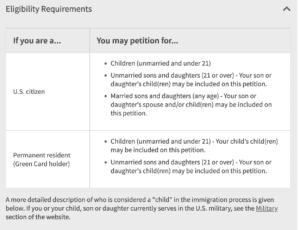How Did a ‘Mauritanian or Senegalese’ Terrorist Get Released into the United States?
I recently explained how Border Patrol’s release of an illegal Venezuelan migrant convicted of murder back home “underscored the public-safety vulnerabilities created by the Biden administration’s non-detention policies at the Southwest border”. A second case involving an illegal migrant wanted on terrorism charges in Senegal who was also released by CBP shows how vulnerable those polices have left our national security, and raises three questions Congress must ask about the administration’s criminally reckless border-release policies: (1) What intelligence databases does CBP access before releasing illegal migrants? (2) Does DHS run intelligence background checks on illegal migrants only after they’re released? (3) How many known terrorists has the administration released whom ICE hasn’t located, and who are still at-large in this country? Congress had better ask quickly because this case shows the terrorist threat here is real.
“ERO New York City Arrests Noncitizen Wanted in Senegal for Terroristic Activities”. On October 19, ICE issued a press release captioned “ERO New York City arrests noncitizen wanted in Senegal for terroristic activities”. It began:
On Oct. 17, Enforcement and Removal Operations (ERO) New York City announced the arrest of an unlawfully present Mauritanian or Senegalese citizen wanted by Senegalese authorities for criminal conspiracy in relation to a terrorist organization; destruction, degradation and damages in relation to a terrorist organization; acts or preparatory acts aimed at compromising public safety or causing serious political troubles; direct provocation of an armed crowd; and holding arms without prior administrative authorization.
There’s a lot to unpack in that excerpt, beginning with the fact that ICE is still unclear on whether the individual — whose name was not disclosed consistent with the Biden administration’s policy of not tarnishing the reputations of criminal and terrorist illegal aliens — is Mauritanian or Senegalese, and how it was that he came to be in the United States “unlawfully”.
ICE (helpfully) answers the second question, but its answer simply raises more questions about the first:
On Oct. 3, U.S. Border Patrol encountered the noncitizen in the area of Monument Hill near Lukeville, Arizona. Officials processed him and served him a notice to appear as a noncitizen present without admission or parole. The noncitizen was released on his own recognizance and provided with documentation to report to ERO New York City.
To be clear — the individual in question (1) entered illegally; (2) was apprehended; (3) couldn’t prove what his nationality was; but (4) was released on his own recognizance anyway on the same day that he was caught, and thereafter made his way to New York City or its environs.
The Terrorism Allegations — Who in the U.S. Government Knew What, and When? I’ll return to those fairly critical points below, but what happened next is so exceptional, I’m surprised that ICE included it in a press release: “On Oct. 10, Homeland Security Investigations [HSI] agents attached to the FBI’s Counter Terrorism Division notified ERO New York City that the noncitizen was wanted in Senegal for terroristic activities.”
Unexplained in that passage is how HSI agents “attached to the FBI’s Counter Terrorism Division” determined that this “Mauritanian or Senegalese” national who was released a week earlier on the same day that he was apprehended after entering illegally, “was wanted in Senegal for terroristic activities”.
There are only two answers to that question, and neither reflects well on how DHS is vetting the illegal migrants it apprehends at the Southwest border before it releases them.
The first is that Border Patrol agents can only review limited U.S. government intelligence when making release decisions at the Southwest border, and that other U.S. government databases containing the derogatory information about this unidentified “Mauritanian or Senegalese citizen” are off-limits to them.
If that’s true, it heightens concerns raised by U.S. district court Judge T. Kent Wetherell II in his March 8 opinion in Florida v. U.S., where he explained that:
DHS has no way to determine if an alien has a criminal history in his home country unless that country reports the information to the U.S. government or the alien self-reports. Therefore, DHS is mainly only screening aliens at the border to determine if they have previously committed a crime in the United States, and because many of these aliens are coming to the United States for the first time, DHS has no idea whether they have criminal histories or not. [Emphasis added.]
That finding assumes that if the alien’s “home country” reports derogatory information about one of its nationals to the U.S. government that such intelligence would somehow be made available to Border Patrol agents in isolated stations along the border. But, as this case suggests, that might not be true.
That conclusion actually puts the Biden administration’s migrant release policies in a better light from a national-security perspective than the alternative.
The alternative is that under the Biden administration’s release protocols, Border Patrol agents at the Southwest border are first releasing illegal entrants about whom little is known into the United States, and only after the fact is any U.S. government agency (HSI, ERO, FBI, etc.) seeking derogatory information about those aliens from their home countries. If true, it’s criminally reckless.
As I explained in that earlier post, under the lawful visa issuance process at U.S. consulates abroad, foreign nationals wanted abroad for crimes like “criminal conspiracy in relation to a terrorist organization” and “destruction, degradation and damages in relation to a terrorist organization” are barred from receiving visas before they ever arrive in the United States.
Under the second alternative, that congressionally mandated scheme is being flipped on its head.
Critics may argue that I am speculating about these points, but speculation is all I have to go on. These Biden release schemes are so divorced from Congress’ standard operating procedures, and its lack of transparency is so stark, there are no clear answers.
Only Congress can get to the bottom of what is happening at the border, and it is incumbent on it to do so. I’m not certain, however, that they even know where to start.
The BIA Standard for Aliens Seeking Release from DHS Custody. The Board of Immigration Appeals (BIA) has held that removable aliens (such as illegal entrants) seeking release from DHS detention must establish that they don’t “present a danger to persons or property”, are “not a threat to the national security”, and don’t “pose a risk of flight”.
Only aliens who establish that they don’t pose a danger to the community, or a national-security risk, are eligible for release, while — under that BIA standard — DHS is supposed to set a bond high enough to ensure that any alien who poses a flight risk will appear in immigration court and for removal.
The alien referenced in that October 19 press release plainly poses a threat to both the community and the national security, but as explained above, DHS (for reasons that remain wholly unclear) never made that determination until a week after he was set free.
That said, if an alien can’t prove who he or she is, there’s no way for DHS to determine whether that alien is a danger to the community or a national-security threat. Even omitting those critical facts, however, such an alien is the definition of a “flight risk”. If you don’t even know who the alien is, how can you conclude the alien will appear? You can’t.
Here, it’s clear that Border Patrol released this individual not knowing his identity, as evidenced by the fact that ICE describes him as a “Mauritanian or Senegalese citizen”. The two countries share a 505-mile common border, but they are still two separate countries.
At a (still unacceptable) minimum, Border Patrol should have either detained him until he could establish his identity or set a significantly high bond to ensure his future appearance, but neither happened. Instead, he was released on his own recognizance on the day he was apprehended without agents requiring him to prove who he was.
Jama’at Nusrat al-Islam wal-Muslimin. According to the CIA Factbook, the only terrorist organization operating within Senegal — and therefore the one that this individual almost definitely belonged to — is Jama’at Nusrat al-Islam wal-Muslimin (JNIM).
The Center for Strategic and International Studies (CSIS) describes JNIM as “an al Qaeda-affiliated Salafi-jihadist insurgent organization that seeks to replace established state authority with a conservative interpretation of Islamic law”.
The U.S. State Department designated JNIM as a foreign terrorist organization in September 2018, six months after it claimed responsibility for an attack on an army headquarters and the French Embassy in Burkina Faso.
That was not an isolated incident, as the U.S. Director of National intelligence (DNI) reports that “JNIM regularly attacks French, multinational, and local security forces in West Africa, as well as local and foreign civilians in the region”.
All of this raises the specter that al Qaeda-affiliated terrorists with a history of attacking Western interests are attempting to enter the United States. Part of the reason why we have immigration laws is to keep such actors out of this country, but as the foregoing reveals, the Biden administration’s border release policies are actually making it easier for them to enter.
Questions for Congress. This incident raises three questions Congress must ask the administration about what’s happening at the Southwest border: (1) What intelligence databases is CBP accessing before releasing illegal migrants into the United States? (2) Does DHS run background checks on those aliens only after they’re released? (3) How many known terrorists has the administration released whom ICE hasn’t located? As noted, I can raise such questions, but only Congress can get answers — and the clock is ticking.





